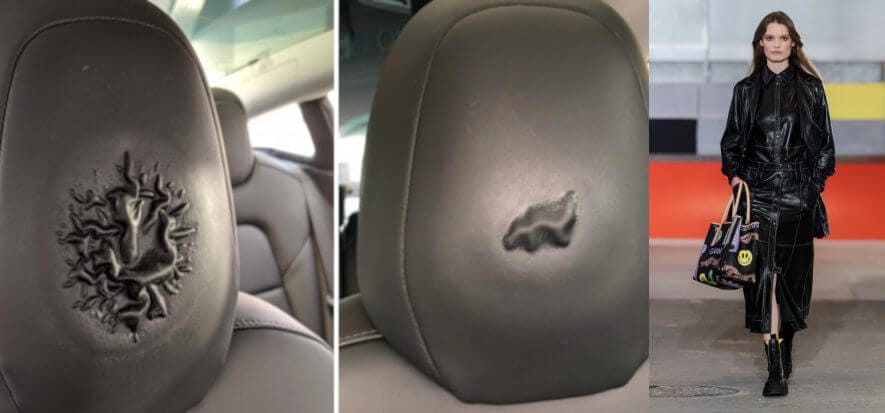Ganni decided to substitute leather with an alternative material. We aren’t afraid to say that the Danish brand is mistaken in his choices regarding leather: the reasons behind the decision and the trust in bio-based textiles are incorrect. Because, as shown by the debate on Tesla’s vegan interiors, looking bad to the public can be very easy.
Ganni is misteken on leather
Nicolaj Reffstrup, founder of Ganni, explained that the brand will eventually gradually cut its leather collections. Because, according to him, “while the material has margins”, it will “soon become obsolete”, just like “smoking on TV”. Yet, this is a personal opinion. Reffstrup is, on the other hand, simply wrong when he explains he wants to ban leather “because of the high emissions of the livestock industry”. It’s the same error made by Volvo. If Ganni’s founder was more informed, he would know that tanning actually gives value to a byproduct of the livestock industry. By banning the use of leather, he doesn’t improve the emissions of the livestock farms, but rather sabotage an industrial chain that conducts an upcycling activity. It makes us smile, that Ganni prefers a “vegetable-based” material, because “it uses a byproduct of the agricultural segment”, even though the material is made 45% made of “water-based polyurethane”.
Careful of the alternatives
From Ganni (here in photo on the right is a look by the brand), the explanation includes a statement in which they say that it took a lot of time to find an alternative to leather. It’s to be seen whether the choice is the right one. The Hog Ring reported malcontent across Tesla buyers this summer. Vegan interiors of the brand do, sometimes, create bubbles underneath (as seen in photo). The automaker though has stated they will not reimburse customers that find inflated seats. Why? Because the issue has nothing to do with Tesla’s manufacturing, but they are due to client use error. “The use of insolvents (including alcohol), gel-based products made with alcohol (such as hand sanitizer), citrus, naphtha or silicone-based products of additives – says the owner’s manual -, can cause damages when used on the car’s interiors”.
The disappointment of Tesla customers
This answer provided by the automaker disappointed customers. We can’t be sure of the customers’ application of said products on the seats before they started showing lumps. It could even be due to indirect contact, such as a gel applied on the skin, or a product used on clothing that could transfer on the interiors. “If a seat can’t handle coming into contact with beauty products – states a user -, then it’s not made for the purpose it should have”.
Read also:
- Volvo’s dirty trick: reforming the livestock industry by punishing leather
- Leather, this is how Jaguar Land Rover responds to the market (and Volvo)










